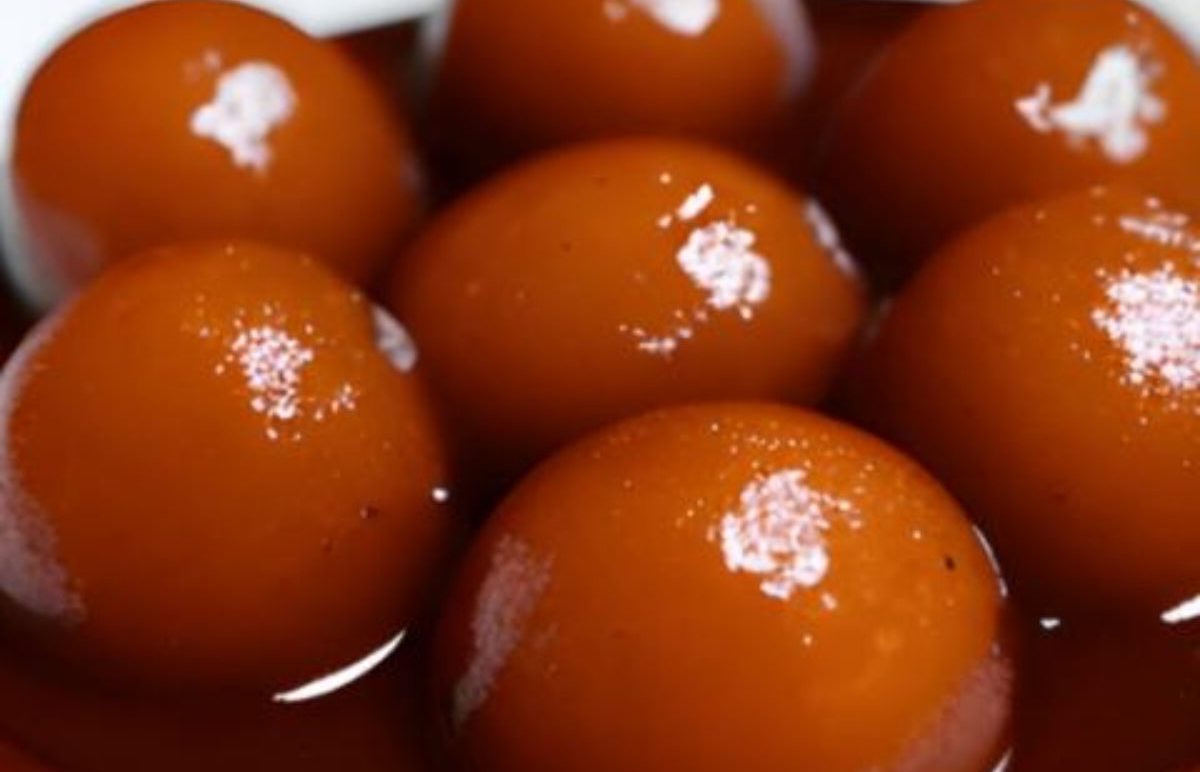Gulab Jamun Recipe: A Sweet Symphony of India
Introduction
Imagine a world where every bite is a sweet, melt-in-your-mouth sensation, and each morsel is a piece of culinary artistry. In the enchanting realm of Indian cuisine, one dessert reigns supreme – the delectable Gulab Jamun. This saccharine delight, adorned with fragrant rosewater syrup, has captured the hearts and palates of people across the globe. Join us on a delightful journey into the history, ingredients, preparation, and the heartwarming experience of enjoying Gulab Jamun.
The Origins: A Sweet History
The story of Gulab Jamun stretches back centuries, tracing its roots to the Mughal Empire, which reigned over the Indian subcontinent from the early 16th to the mid-19th century. The term “Gulab Jamun” is a fusion of two Persian words: “Gulab,” meaning rosewater, and “Jamun,” referring to a South Asian fruit with a similar size and shape. This name pays homage to the dessert’s aromatic syrup and its round, petite form.
Initially, Gulab Jamun was a royal indulgence, crafted with precision and care in the palace kitchens of the Mughal emperors. It was served exclusively to the elite and nobility during lavish feasts and celebrations. Over time, this sumptuous treat made its way into the hearts and homes of ordinary people, evolving into a quintessential Indian dessert enjoyed on various occasions, from festivals to family gatherings.

The Ingredients: A Symphony of Flavors
Gulab Jamun’s charm lies in its simplicity, with a shortlist of ingredients that come together to create a symphony of flavors. To prepare this divine dessert, you will need:
- Khoya/Mawa: The heart of Gulab Jamun is khoya, a thickened milk solid that forms when milk is simmered and reduced. Khoya lends the dessert its rich, creamy texture.
- Maida (All-Purpose Flour): Maida is used to bind the khoya and give the Gulab Jamun its structure.
- Baking Soda: A pinch of baking soda is added to the dough to help the Jamuns rise and become airy.
- Ghee: A small amount of ghee (clarified butter) is used for frying the Gulab Jamuns to a perfect golden brown.
- Milk: A few drops of milk are sometimes added to the dough to achieve the right consistency.
- Cardamom Powder: Cardamom lends a delightful, aromatic twist to the flavor profile of Gulab Jamun.
For the syrup:
- Sugar: The syrup is created by dissolving sugar in water to form a sweet bath for the Jamuns.
- Rosewater: True to its name, Gulab Jamun is perfumed with rosewater, adding a unique and delightful fragrance.
Time and Preparation: Crafting the Magic
Creating Gulab Jamun is a labor of love, but the results are well worth the effort. Here’s how you can make this cherished dessert:
Preparation Time: Approximately 30 minutes Cooking Time: Approximately 20-30 minutes Serving: Makes around 20-25 Gulab Jamuns
Step 1: Preparing the Dough
- Begin by crumbling the khoya in a large mixing bowl.
- Add a couple of tablespoons of maida and a pinch of baking soda to the khoya.
- Incorporate the ingredients gently, using your fingers, until you have a soft and smooth dough.
- If needed, add a few drops of milk to achieve the desired consistency.
- Cover the dough and let it rest for about 10 minutes.
Step 2: Shaping the Jamuns
- While the dough is resting, prepare the syrup. Dissolve sugar in water and add rosewater to it. Boil the mixture until it reaches a one-string consistency, then set it aside to cool.
- Now, take small portions of the dough and roll them into smooth, crack-free balls. Ensure there are no cracks, as they can cause the Jamuns to break apart during frying.
- Keep the rolled balls covered with a clean cloth to prevent them from drying out.
Step 3: Frying the Jamuns
- Heat ghee in a deep pan or kadhai on medium-low heat. To test if the ghee is ready, drop a small piece of dough into it; if it sizzles and rises to the surface, the ghee is at the right temperature.
- Carefully slide a few Jamuns into the hot ghee, making sure not to overcrowd the pan. Overcrowding can result in uneven cooking.
- Fry the Jamuns on low heat, turning them gently to achieve an even, golden-brown color.
- Once cooked, use a slotted spoon to remove them from the ghee, allowing excess ghee to drain.
- Transfer the fried Jamuns directly into the warm sugar syrup.
Step 4: Soaking in Sweetness
- Allow the Gulab Jamuns to soak in the syrup for at least 2 hours or, even better, overnight. This allows them to absorb the aromatic sweetness fully.
Step 5: Serving and Savoring
- Gulab Jamun can be served warm or at room temperature. Garnish with slivers of pistachio or almond for an extra touch of elegance.
- Pair with a scoop of vanilla ice cream for an indulgent twist, or enjoy it with a hot cup of masala chai for a truly Indian experience.
Conclusion: A Sweet Embrace of Tradition
In the realm of Indian cuisine, Gulab Jamun is not just a dessert; it’s a symbol of tradition, love, and celebration. Its humble origins in the royal kitchens of the Mughals have transformed into a cherished sweet treat enjoyed by people of all backgrounds worldwide. Making Gulab Jamun might require patience and precision, but the reward is a bite of pure bliss—a taste of India’s rich culinary heritage.
So, whether you’re celebrating a festival, hosting a family gathering, or simply craving a bit of sweetness in your life, don’t hesitate to indulge in the magic of Gulab Jamun. It’s a sweet embrace of tradition that will leave your taste buds singing with joy.
Gulab Jamun recipe(youtube)- https://www.youtube.com/watch?v=Do9mk9mya_A

